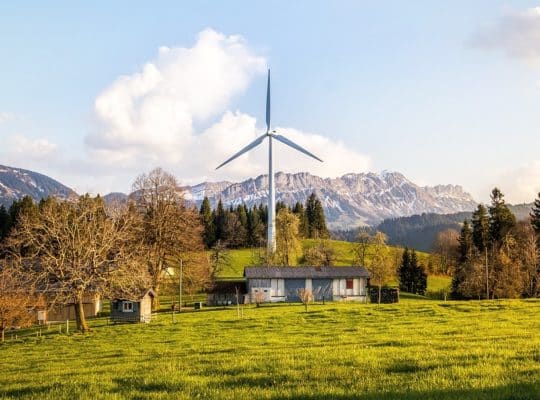
As people become aware that their actions impact the environment, eco-friendly homes are gaining popularity in the real estate market. These homes are designed to minimize environmental harm and reduce energy consumption. They use sustainable materials, promote energy efficiency, and incorporate technology to help homeowners monitor and control their energy usage. Larry Weltman discusses the concept of eco-friendly homes, their benefits, and the role of technology in creating sustainable real estate.

Eco-Friendly Homes: What Are They?
Eco-friendly homes, also known as green or sustainable homes, are designed to minimize negative environmental impacts while promoting a healthier lifestyle for their occupants. These homes use renewable energy sources to reduce traditional energy usage and reduce carbon emissions. They also incorporate sustainable building materials and design elements to improve energy efficiency and reduce waste.
Key features of eco-friendly homes include low energy consumption, water conservation, and natural light and ventilation. These homes often have green roofs or walls, which provide insulation and increase biodiversity in urban areas. Indoor air quality is also a major focus, with the use of non-toxic materials and proper ventilation systems to promote better health for occupants.
The Importance of Sustainable Real Estate
The real estate industry contributes to global carbon emissions and resource depletion, making transitioning towards more sustainable practices important. Sustainable real estate benefits the environment and economically advantages homeowners and developers. By incorporating energy-efficient features, these homes can significantly lower utility costs for residents and increase property value.
As consumers become environmentally conscious, demand for sustainable homes is increasing. This trend has led to the development of green building certifications which recognize and promote eco-friendly homes. These certifications validate a property’s sustainability and attract potential buyers who prioritize environmentally friendly living.
Technology in Sustainable Real Estate
Technology makes sustainable living more accessible and practical for homeowners. Advancements in renewable energy systems have made it easier and more affordable to integrate solar panels, geothermal heating, and other eco-friendly technologies into homes. Smart home technology also allows for greater control and monitoring of energy usage, promoting efficient consumption.
Technology enabled the development of innovative building materials and techniques that improve energy efficiency. For example, 3D printing can produce custom-designed homes with minimal waste, and green concrete made from recycled materials reduces construction carbon emissions. Virtual and augmented reality are also used to design and visualize sustainable homes, allowing for more efficient planning and reducing material waste.
Challenges and Solutions for Eco-Friendly Homes
While eco-friendly homes offer numerous benefits, there are also challenges to their widespread adoption. One major barrier is the upfront cost of incorporating sustainable features and materials into a home. Many homeowners may not have the financial means or incentives to invest in these upgrades. Additionally, there may be resistance from developers and contractors who are unfamiliar with sustainable building practices..
To address these challenges, governments and organizations are offering incentives to encourage the development of eco-friendly homes. These can include tax breaks, grants, and low-interest loans for energy-efficient upgrades. Governments are also implementing stricter building codes that require new constructions to meet certain sustainability standards, making it easier for developers to incorporate these practices into their projects.
Final Thoughts
Overall, eco-friendly homes play a role in promoting a more sustainable future. Through advanced technology and innovative building practices, these homes offer numerous benefits for homeowners and the environment. As the demand for environmentally friendly living continues to grow, governments, developers, and individuals must prioritize sustainable practices in the real estate industry. With continued advancements and increased awareness of the importance of eco-friendly homes, we can create a more sustainable world for generations to come. So, let’s all consciously build and live in eco-friendly homes for a greener future.
Leave a Reply